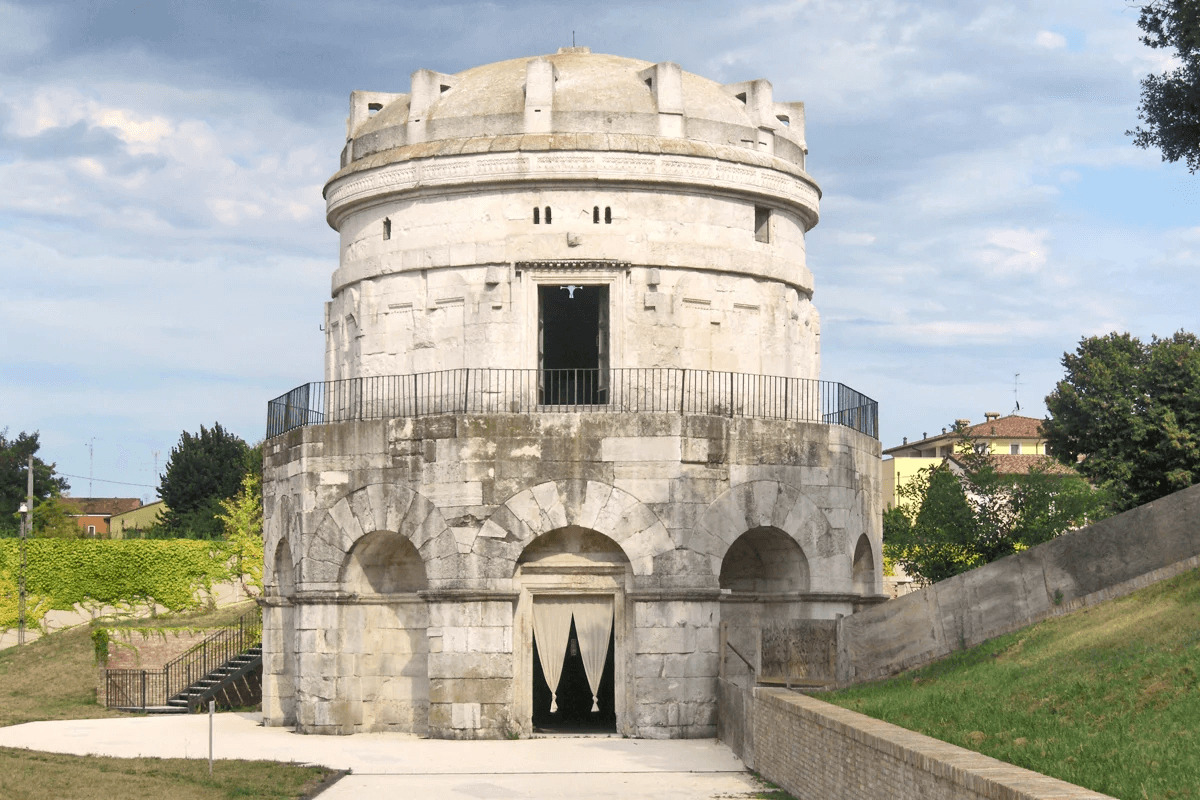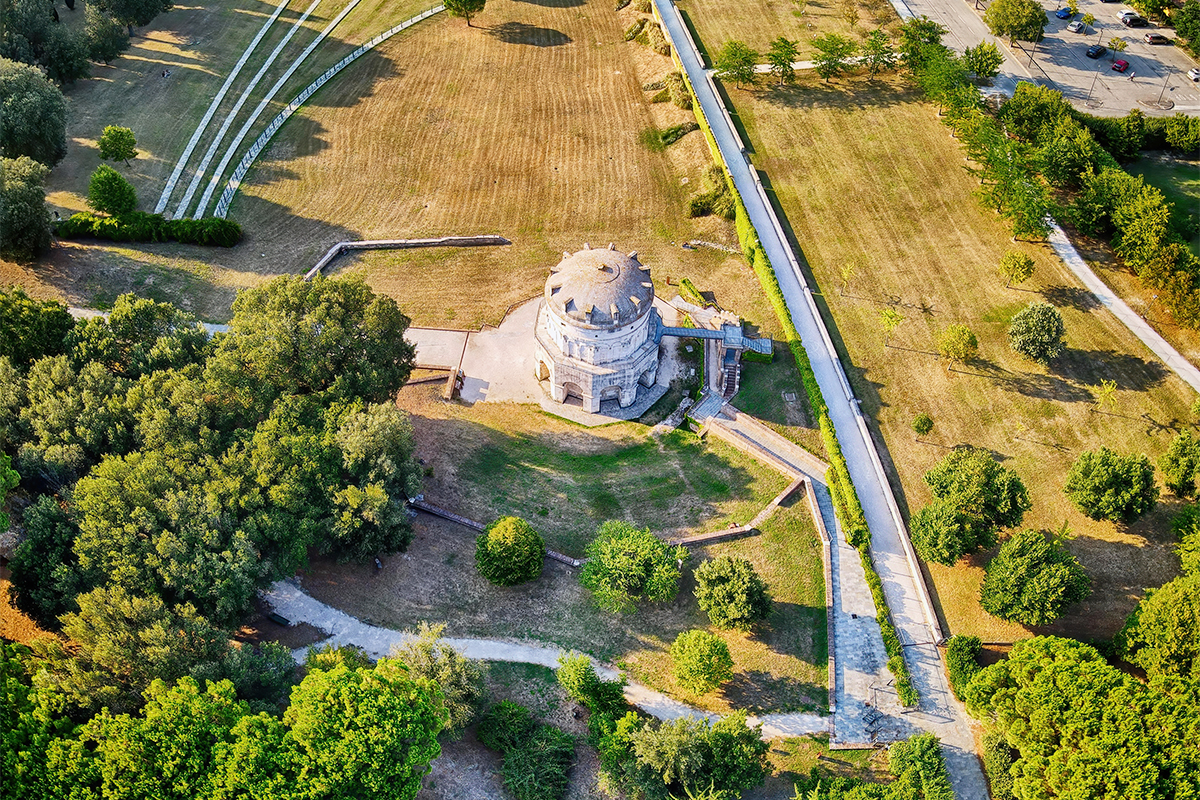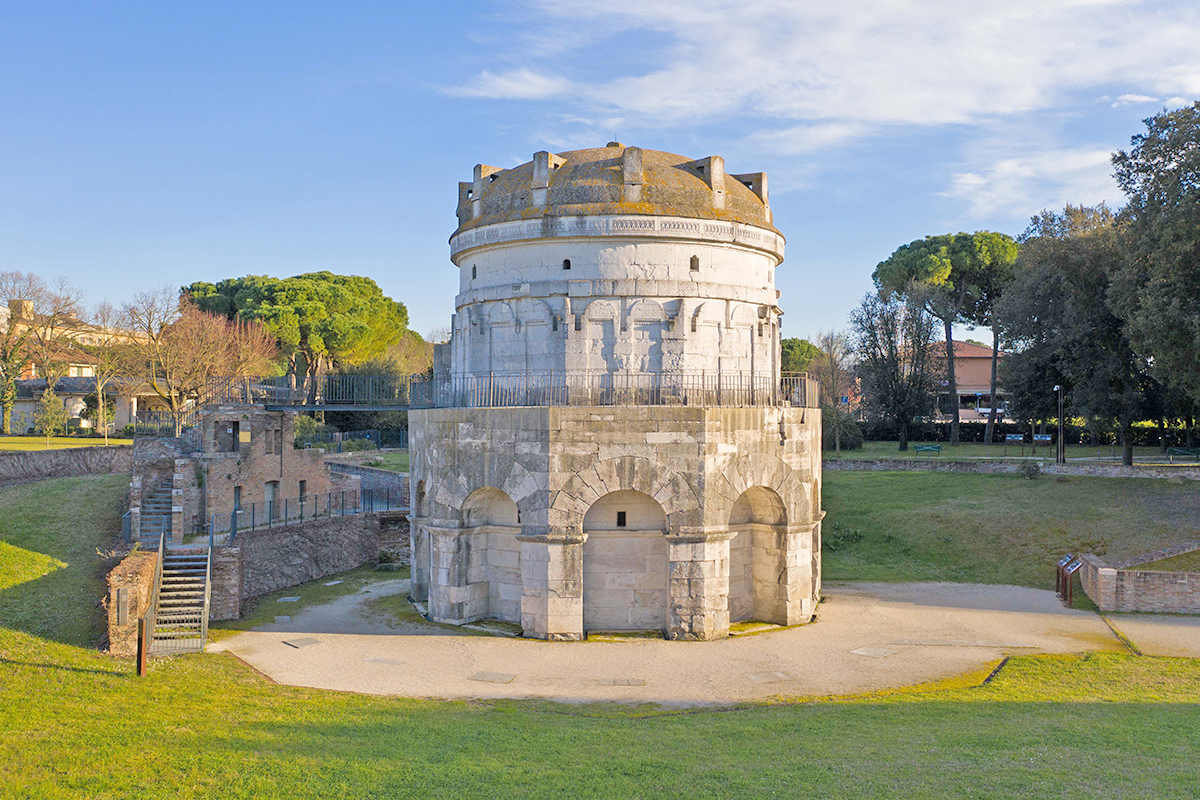Once you leave the historical centre and the railway road behind, in a big public park is one of the most iconic monuments in Ravenna.
It’s the MAUSOLEUM OF THEODORIC, the most important burial monument built by the Ostrogoths in Italy, UNESCO World Heritage Monument since 1996.
The architecture
Built as his own burial place by Theodoric in 520 AD, the mausoleum shows the masterful use of eastern influences and of the Roman traditional building technique, typical of some other mausoleums.
The use of mixed techniques gave life to a monument that became a crossroads between the Roman people and the Gothic “invaders”.
The monument was entirely built with blocks of Aurisina marble stone through a dry laying process. It features a central plan and is divided into two decagonal superimposed orders.
On the top of the mausoleum lies a large monolithic dome of remarkable dimensions, with no equals in all the antique and modern architectural heritage (10.76 m in diameter and 3.09 m in height), crowned by twelve curved handles with the names of eight Apostles and four Eavngelists.
According to recent calculations, it weighs about 290 tons and, still today, scholars have advanced a number of hypotheses concerning the transport of the monolith and the technique employed for its placement.
Someone believes that the handles were specifically built for the monolith’s transportation and positioning, and that it must have been a quite difficult task, as suggested by the big crack on the dome.
According to a legend, a divine lighting split open the mausoleum’s dome, and, hitting Theodoric who was sitting inside, killed him as punishment for his crimes.
The mausoleum’s inner spaces
The lower floor develops in a series of niches inserted in the nine walls, while the tenth one is on the entrance door.
The lower cell, with a cross plan and a cross vault, was probably a chapel, a worship and funerary place for Theodoric and his family.
The upper floor, however, has a central plan with a porphyry basin at its centre. According to tradition, the remains of Theodoric laid in that very basin.
No evidence suggests there was an inner staircase leading to the upper floor; this proves the second theory right, i.e. that since the construction, the mausoleum has always had a burial purpose.
Theodoric’s remains must have been preserved here, but were moved and lost after Justinian’s decree, in 561 AD, when the mausoleum was turned into an oratory and consecrated to the Orthodox worship.









